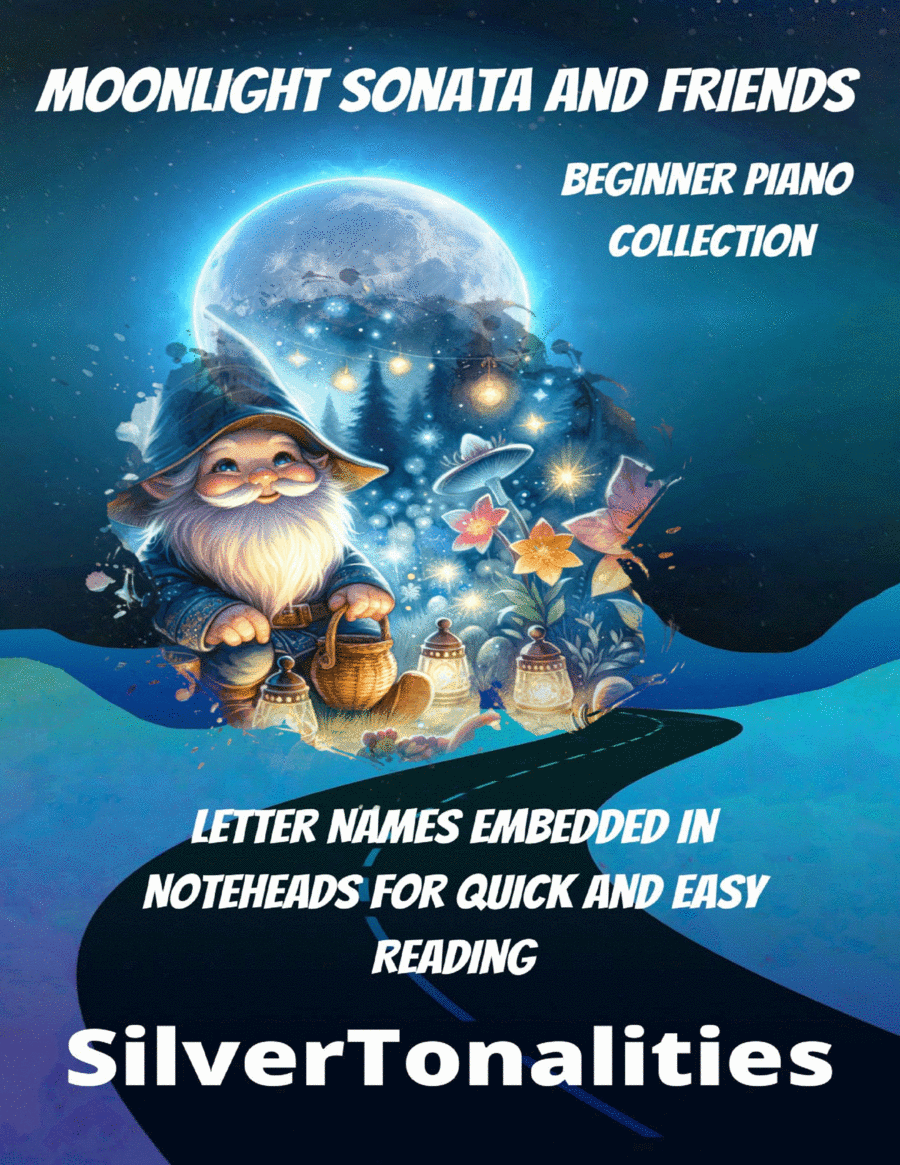Easy Piano - Level 1 - Digital Download SKU: A0.1389155 Composed by Ludwig van Beethoven. Arranged by SilverTonalities. Baroque,Classical,Instructional,Romantic Period. Score. 41 pages. SilverTonalities #972684. Published by SilverTonalities (A0.1389155). Moonlight Sonata and Friends Beginner Piano CollectionPopular Classics for Beginner Pianists by SilverTonalities!With Letter Names embedded in Noteheads to enable Beginner Pianists to read Music quickly and accurately!PREVIEW, pages 1-2ARIOSO BWV 156, is a Cantata written by the famous German Baroque Composer Johann Sebastian Bach in 1729. A Cantata is a Vocal composition with an Instrumental Accompaniment typically in several Movements and often including a Choir, pages 3-6HUNGARIAN DANCE NUMBER 6 by the German Romantic Composer, Johannes Brahms, originates from a set of 21 Pieces on a Hungarian Theme completed in 1879, pages 7-9REVERIE L68 is a delicate, gentle and âdreamyâ Piano Solo Piece which was written in 1890 by the popular French Impressionistic/Romantic Era Composter, Claude Debussy, pages 10-12MARCH OF THE PRIESTS from the famous Austrian Composer Wolfgang Amadeus Mozartâs 2 Act Opera âThe Magic Fluteâ K260 (Die Zauberflote), which premiered in 1791 and contains Masonic Ritual Elements as well as Fairy Tale themes, pages 13-15ROMEO AND JULIET is an Overture Fantasy by the Russian Romantic Era Composer, Peter Ilyich Tchaikovsky. Based on William Shakespeareâs famous Play âRomeo and Julietâ, it premiered in Moscow in 1870, pages 16-19PAS DES FLEURS (Dance of the Flowers) is known as the âGrand Waltzâ from the 1867 Ballet âNailaâ by the French Romantic Composer, Leo Delibes, pages 20-23HORNPIPE from the famous German Baroque Composer, George Friedrich Handelâs, âWater Musicâ, is from a collection of 3 Orchestral Suites which premiered in 1717, pages 24-26MOONLIGHT SONATA 1ST MOVEMENT Theme, from Ludwig van Beethovenâs Piano Sonata Number 14 In C Sharp Minor Opus 27, Number 2, which was written in 1801 and dedicated to his student, Countess Giulietta Guicciardi, pages 27-30PAVANE OF A SLEEPING BEAUTY (Pavane de le Belle au bois dormant) was written by the French 19th Century Composer, Maurice Ravel, and is the first Piece from his popular âMother Goose Suiteâ, pages 31-33THE GLADIATOR MARCH was written in 1886 by the American Composer John Philip Sousa while he was serving as the leader of the United States Marine Corps Band, pages 34-36WHERE THE LEMON TREES BLOOM (Wo die Zitronen Bluhen), Opus 364 written by the Austrian Composer Johann Strauss Junior in 1874, pages 37-39.
